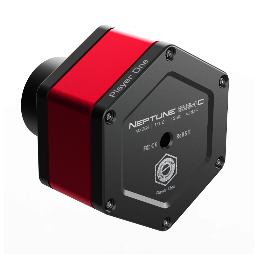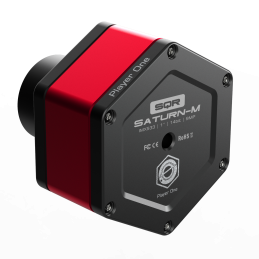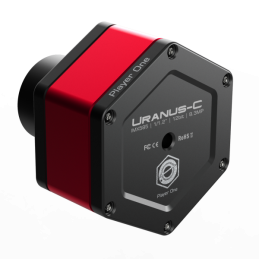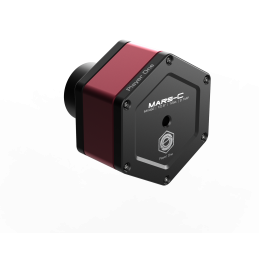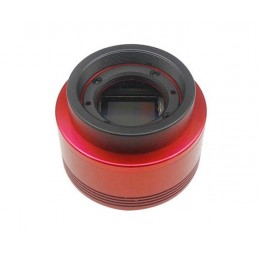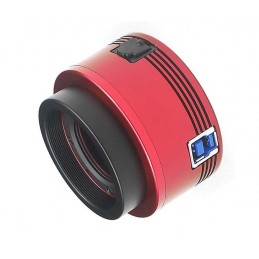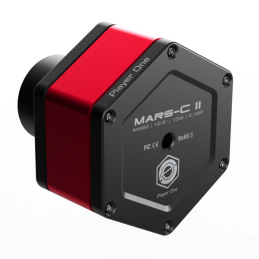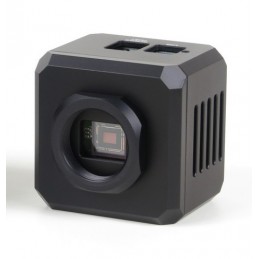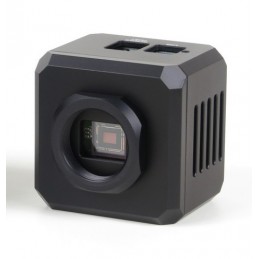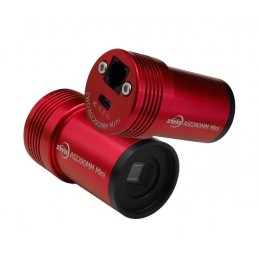New camera generation
Mars-M is a monochrome planetary camera developed by Player One Astronomy, which adopts the Sony IMX290 1/2.8″ CMOS , with a 1944 x 1096 array of 2.9um pixels and the diagonal is 6.46 mm.
The naming of Player One Astronomy cameras is unique. For example, we name the planetary cameras after planets (They are Mercury, Venus, Mars, Jupiter, Saturn, Uranus and Neptune, Earth is not included). The size of each planet to a certain extent, represents the size of camera sensors. We name Saturn with a 1-inch sensor camera, and for Mars, we name it with a ½.8 inch senor camera. All camera names will be engraved on the housing of the cameras.
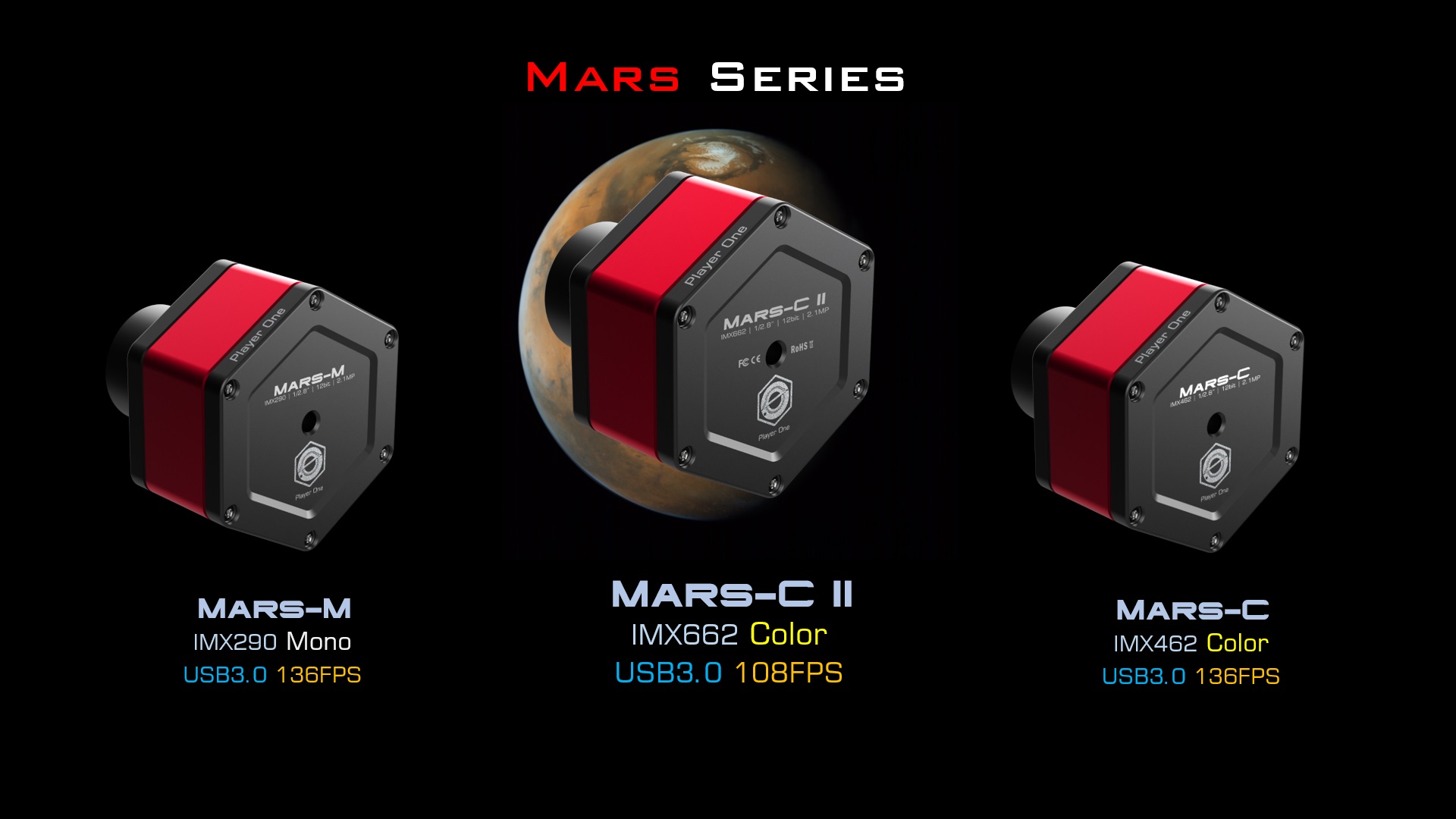
Highlights
Mars-M is an monochrome camera with higher sensitivity than color cameras, you can get brighter image when you do planetary imaging. In additional, the monochrome camera can get a sharper image because it does not need de-Bayer transformation. It is suitable for close-ups of the moon and sunspots.
 – Player One Astronomy.png)
256M DDR3 Cache
Player One Astronomy cameras are the first one who adpots the DDR3 cache in all planetary cameras in the world! It helps stabilize and secure data transmission, it effectively avoids frame dropping and greatly reduces readnoise.
With the DDR3 cache, the Mars-M camera does not have high demands on computing needs any longer, it will still has excellent performance even if it is connected to a USB 2.0 port.
DPS technology
The planetary cameras from Player One Astronomy have DPS (Dead Pixel Suppression) technology. The DPS is anaylse many dark frames to find out thoes fixed abnormal pixel and record the map in camera memory. In imaging, each exposure frames, thoes position of dead pixels will be given a median value according to the active pixels around that abnormal pixel.
 – Player One Astronomy.png)
Performance
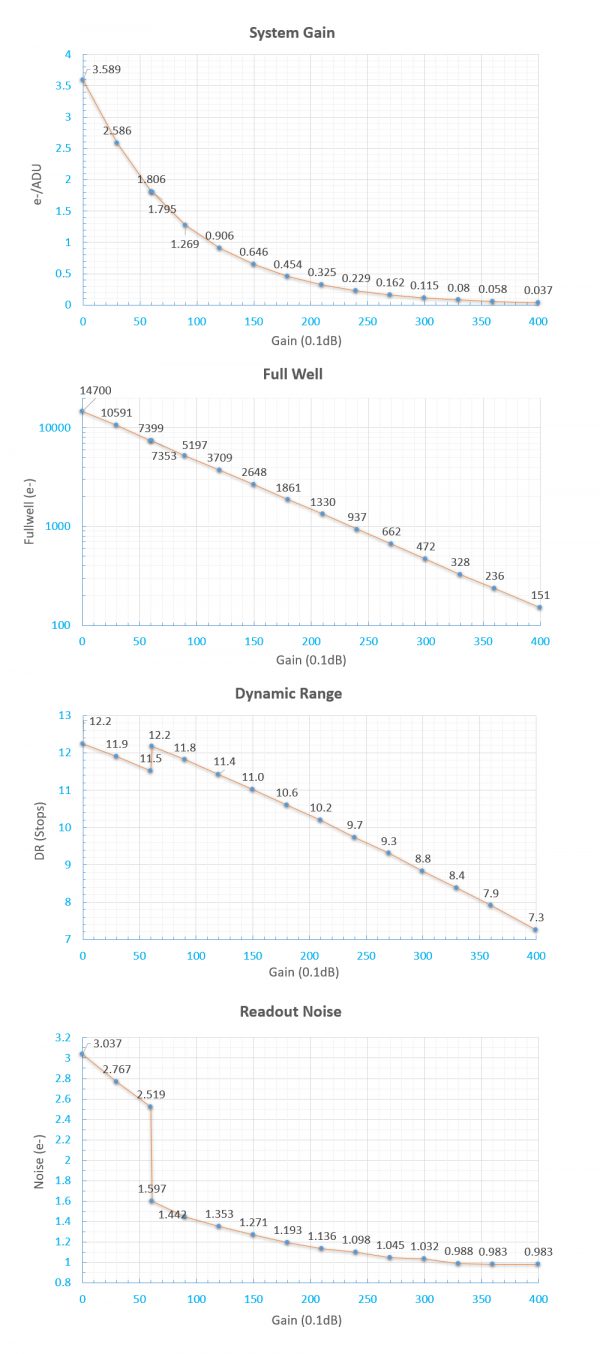
Readout Noise
Regarding readout noise, we solemnly promise that all values are obtained from actual tests. And for users, you could use Sharpcap 3.3 for testing. SC3.3 has a function called Sensor Analysis, provide a very simple way to test readout noise.
We wrote a tutorial on our website: http://player-one-astronomy.com/service/manuals/
After many rigorous readout noise tests, the Mars-C camera can reach a low readout noise of 0.73e at a gain of 350 and around 0.7e at a gain of 400.
If you are interested in readout noise testing, you may try it yourself, which is very simple.
HCG Mode
The Mars-M camera has a unique HCG mode, which will automatically turn on when the camera gain setting is ≥60. The HCG mode can greatly reduce the readout noise and retain the same high dynamic range as the low gain.
QE Curve
The peak value of QE of Mars-M camera is about 80%, and it has very strong ultraviolet and infrared sensitivity. The actual QE value can be estimated by multiplying the ordinate of the official relative QE graph (below) by 80%.
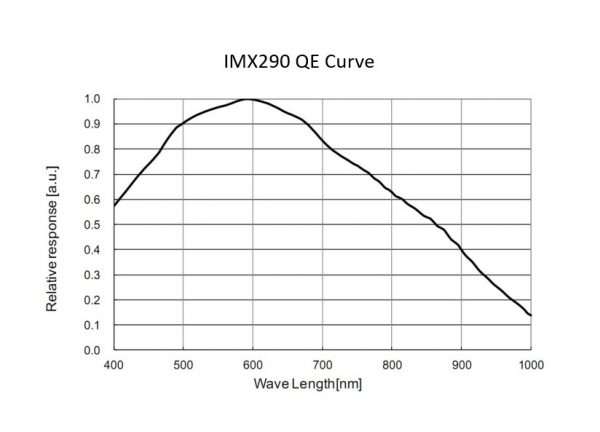
Downloads
Caractéristics
- Sensor: SONY IMX290 1/2.8" CMOS
- Diagonal: 6.5mm
- Total Pixels: 2.1 Mega Pixels
- Max Resolution: 1944×1096
- Pixel Size: 2.9μm
- Chip Size: 5.6mm×3.2mm
- Frame Rate: 136FPS(10bit)
- Exposure Range: 32μs-2000s
- Shutter: Rolling Shutter
- Bayer: RGGB
- Readout Noise: 2.2e~1.3e
- QE Peak: ≈80%
- Full Well: 14.6k e
- ADC: 12 bit
- Data Port: USB3.0/USB2.0
- Adapter: 1.25″ / M42X0.75
- Back Focal Length: 12.5mm
- Protective Window: D32*2MM High Quality AR Plus (Anti Reflection) Multi-Layer Coating
- Diameter: 66mm
- Weight: 180g
- Resolution and FPS:
Under USB3.0 mode
Resolution 12bit ADC 10bit ADC
1944×1096 62.5 FPS 136 FPS
1920×1080 63.5 FPS 138 FPS
1280×720 94.1 FPS 205 FPS
800×600 112.4 FPS 245 FPS
640×480 139.3 FPS 304 FPS
More resolution options could be setup in capture softewares!
Delivery:
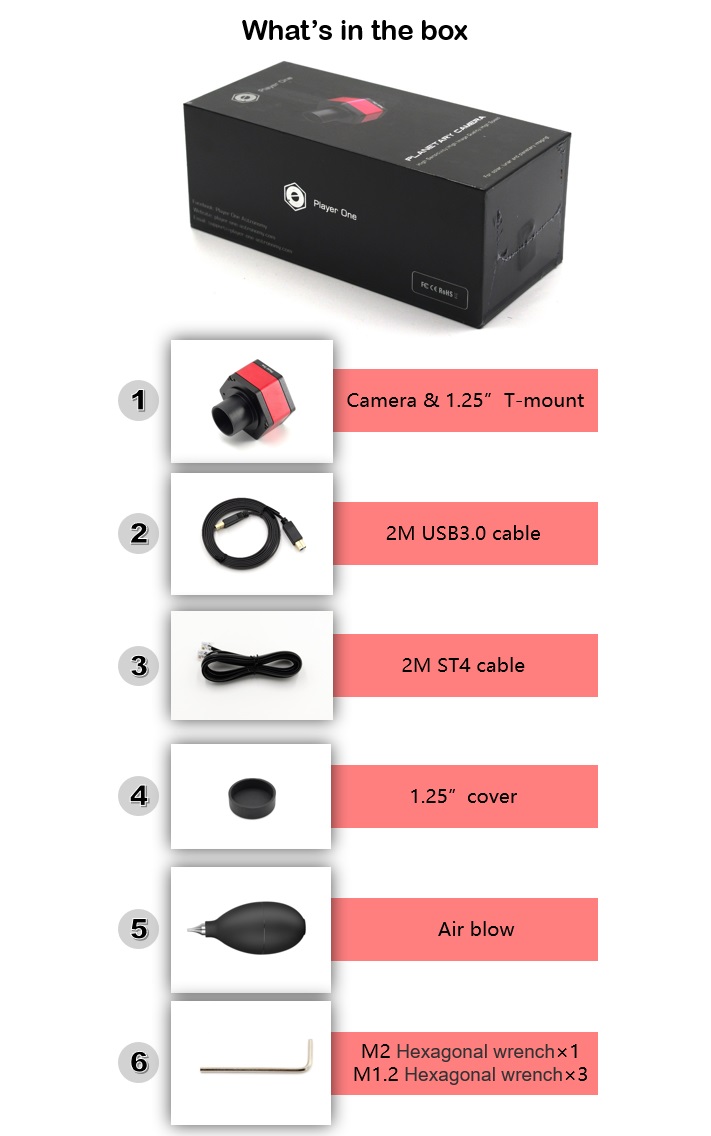
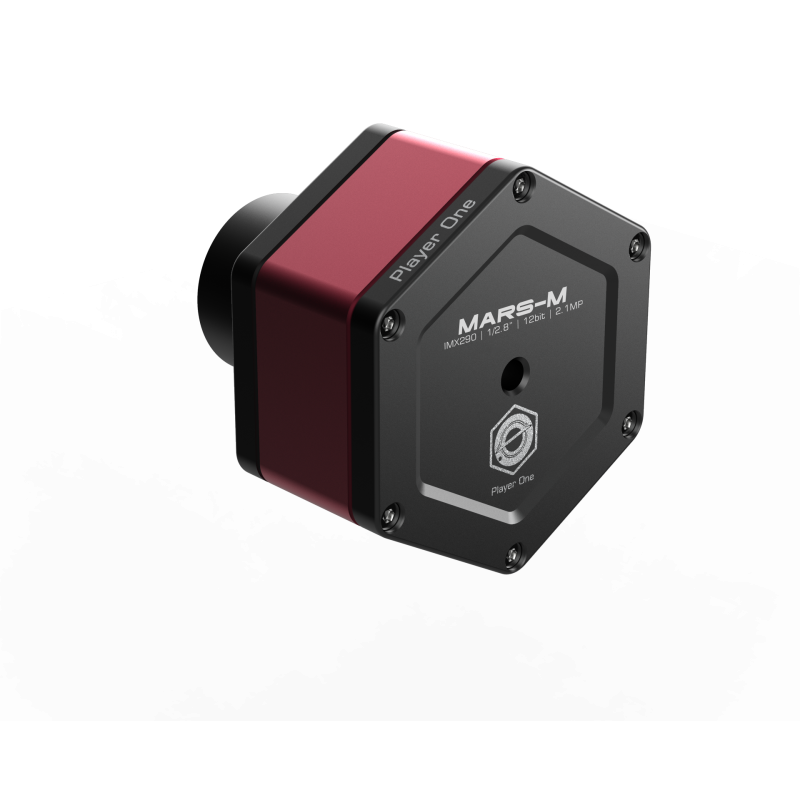

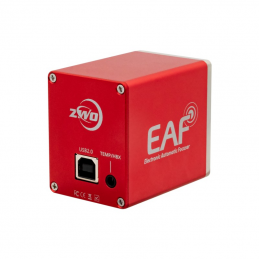
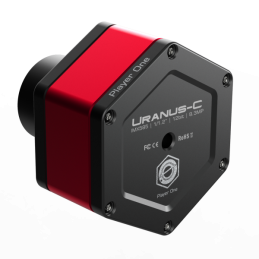
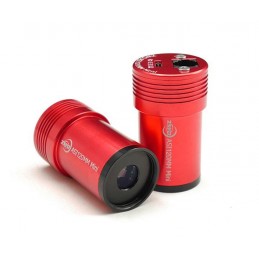
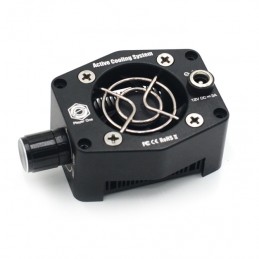
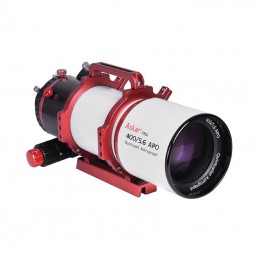
















 – Player One Astronomy.png)
 – Player One Astronomy.png)





